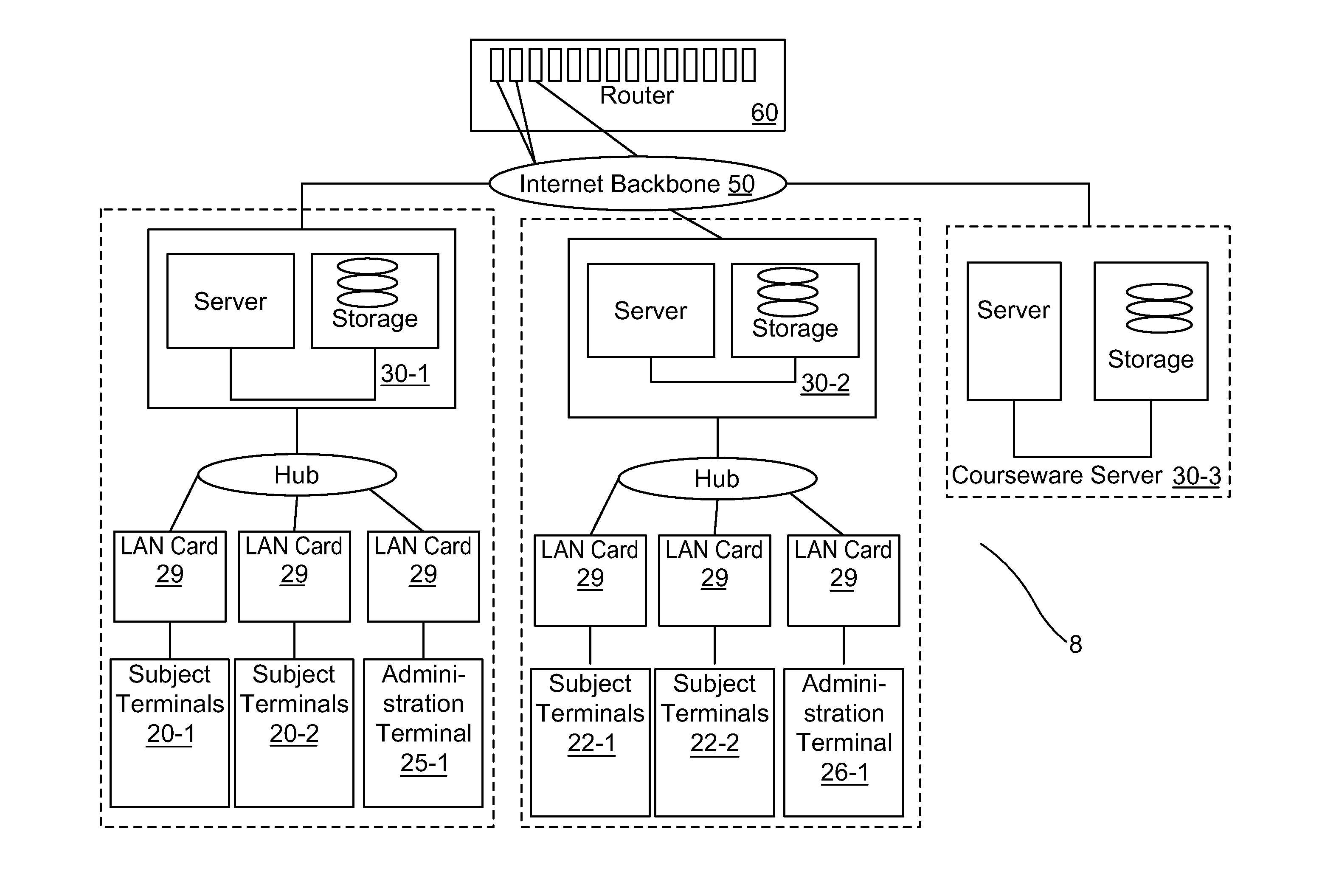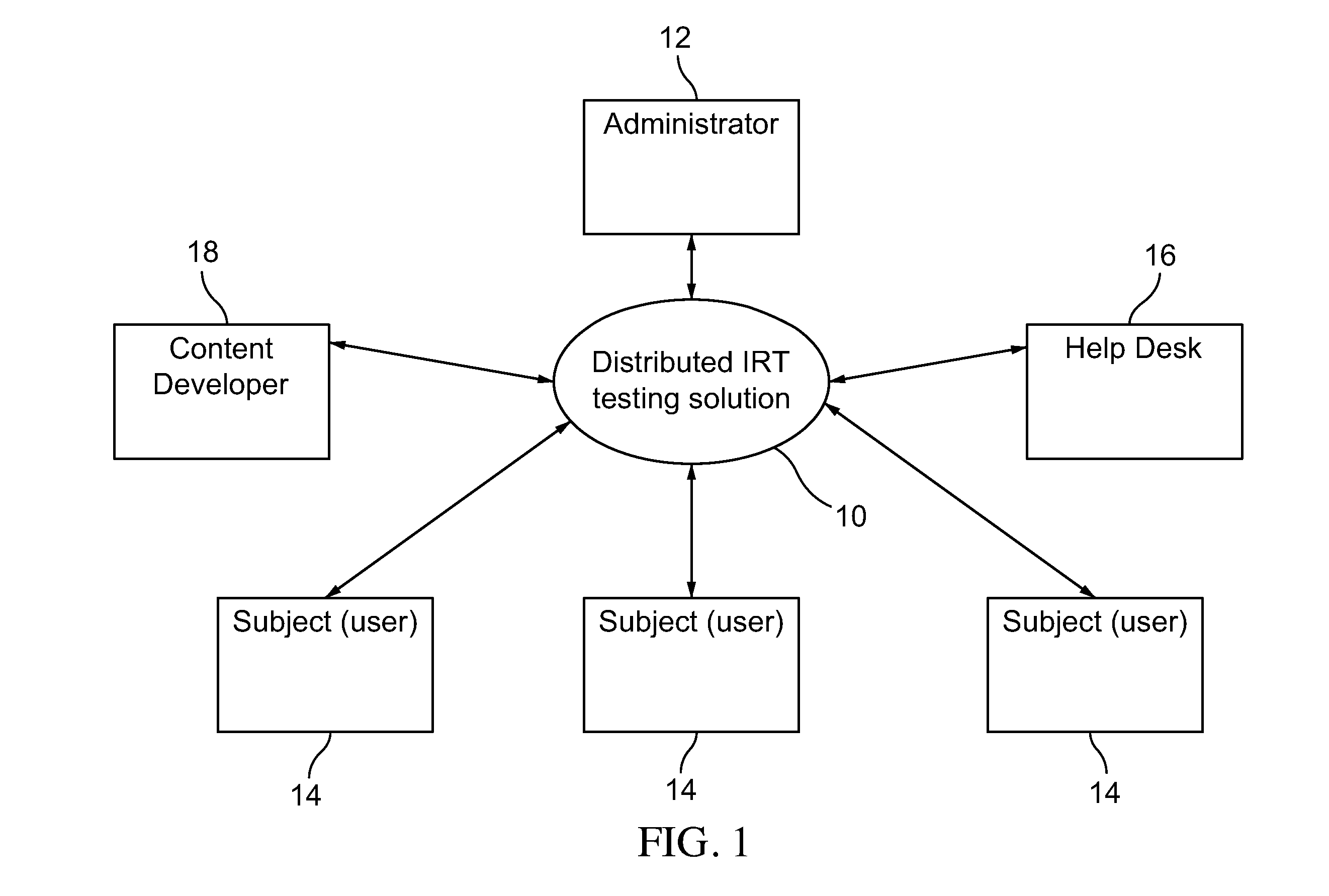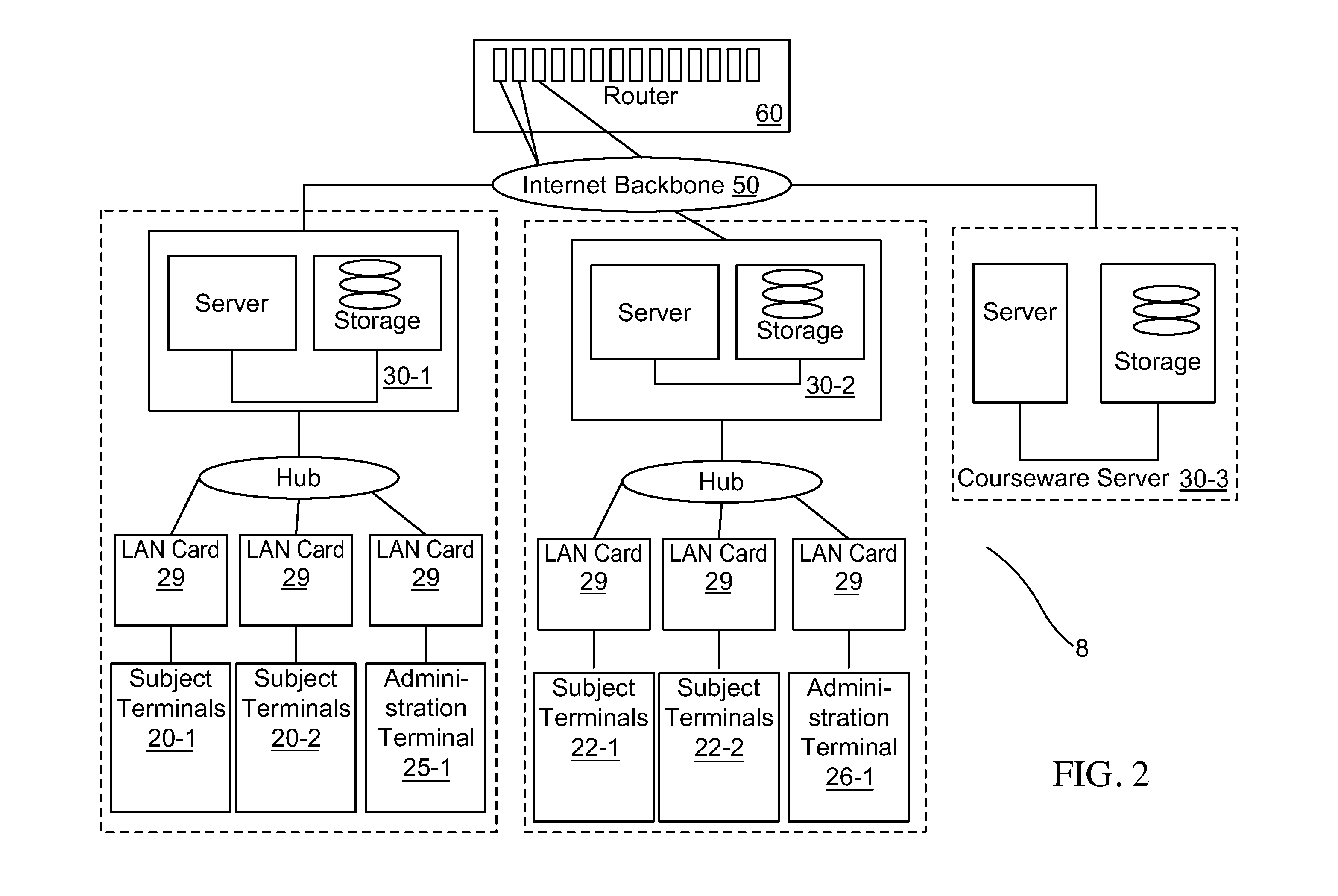Method and System for Knowledge Assessment Using Confidence-Based Measurement
a knowledge assessment and confidence-based technology, applied in the field of knowledge assessment and learning, can solve the problems of system computation, presenting a degree of misinformation or information gap, etc., and achieve the effect of accurately assessing the true extent of knowledge of test subjects
- Summary
- Abstract
- Description
- Claims
- Application Information
AI Technical Summary
Benefits of technology
Problems solved by technology
Method used
Image
Examples
Embodiment Construction
[0060]The present invention provides a method and system for conducting knowledge assessment and learning. The invention incorporates the use of information reference testing and learning techniques deployable on a micro-processor-based or networked communication client-server system, which extracts knowledge-based and confidence-based information from a test subject. The assessment incorporates non-one-dimensional techniques.
[0061]The invention produces a knowledge profile, which includes formative and summative evaluation for the system user and identifies various knowledge quality levels. Based on such information, the system correlates the knowledge profile to a database of learning materials, which is communicated to the system user or test subject for review and / or reeducation of the substantive response.
[0062]The invention interactively accommodates various aspects of test administration and learning by a system user including storage of information and learning materials, te...
PUM
 Login to View More
Login to View More Abstract
Description
Claims
Application Information
 Login to View More
Login to View More - R&D
- Intellectual Property
- Life Sciences
- Materials
- Tech Scout
- Unparalleled Data Quality
- Higher Quality Content
- 60% Fewer Hallucinations
Browse by: Latest US Patents, China's latest patents, Technical Efficacy Thesaurus, Application Domain, Technology Topic, Popular Technical Reports.
© 2025 PatSnap. All rights reserved.Legal|Privacy policy|Modern Slavery Act Transparency Statement|Sitemap|About US| Contact US: help@patsnap.com



